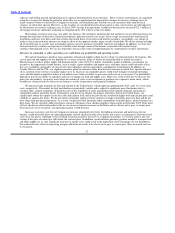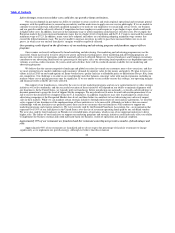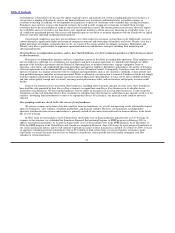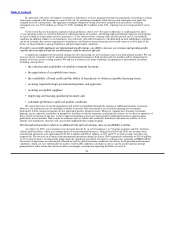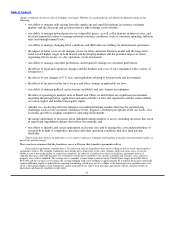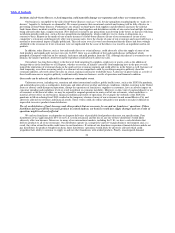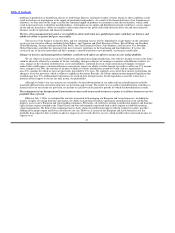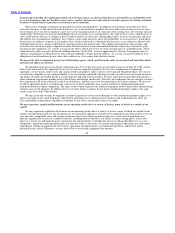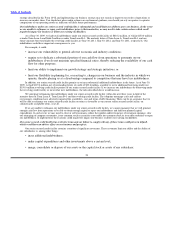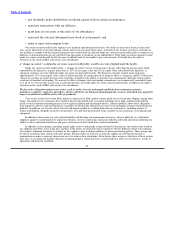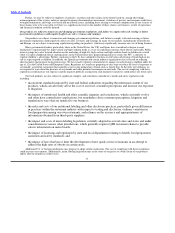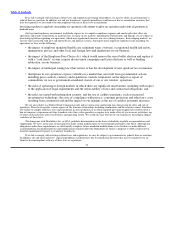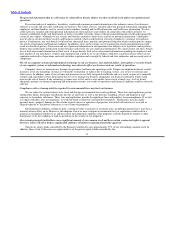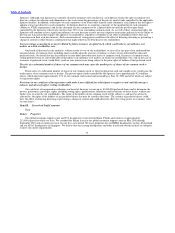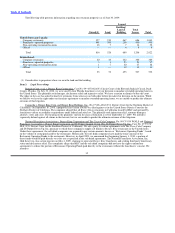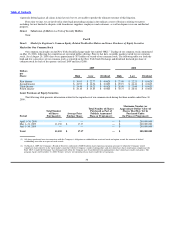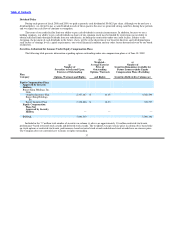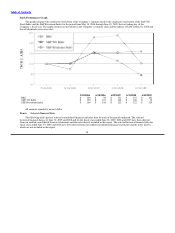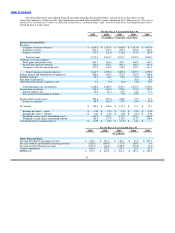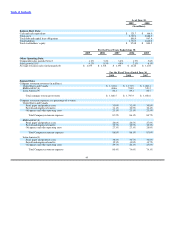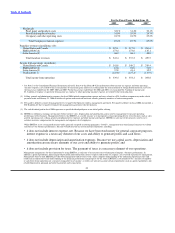Burger King 2009 Annual Report Download - page 33
Download and view the complete annual report
Please find page 33 of the 2009 Burger King annual report below. You can navigate through the pages in the report by either clicking on the pages listed below, or by using the keyword search tool below to find specific information within the annual report.
Table of Contents
Further, we may be subject to employee, franchisee, customer and other claims in the future based on, among other things,
mismanagement of the system, unfair or unequal treatment, discrimination, harassment, violations of privacy and consumer credit laws,
wrongful termination, and wage, rest break and meal break issues, including those relating to overtime compensation. If one or more of
these claims were to be successful or if there is a significant increase in the number of these claims, our business, results of operations
and financial condition could be harmed.
Our products are subject to numerous and changing government regulations, and failure to comply with such existing or future
government regulations could negatively affect our sales, revenues and earnings.
Our products are subject to numerous and changing government regulations, and failure to comply with such existing or future
government regulations could negatively affect our sales, revenues and earnings. In many of our markets, including the United States
and Europe, we are subject to increasing regulation regarding our products, which may significantly increase our cost of doing business.
Many governmental bodies, particularly those in the United States, the U.K. and Spain, have considered or begun to enact
legislation to regulate high−fat, high−calorie and high−sodium foods as a way of combating concerns about obesity and health. Public
interest groups have also focused attention on the marketing of high−fat, high−calorie and high−sodium foods to children in a stated
effort to combat childhood obesity and legislators in the United States have proposed legislation to restore the FTC’s authority to
regulate children’s advertising. Further, regulators in the U.K. have adopted restrictions on television advertising of foods high in fat,
salt or sugar targeted at children. In addition, the Spanish government and certain industry organizations have focused on reducing
advertisements that promote large portion sizes. We have made voluntary commitments to change our advertising to children under the
age of 12 in the United States and European Union. Regulators in Canada are proposing to take steps to reduce the level of exposure to
acrylamide, a potential carcinogen that naturally occurs in the preparation of foods such as french fries. In the State of California, we
are required to warn about the presence of acrylamide and other potential carcinogens in our foods. The cost of complying with these
regulations could increase our expenses and the negative publicity arising from such legislative initiatives could reduce our future sales.
Our food products are also subject to significant complex, and sometimes contradictory, health and safety regulatory risks
including:
• inconsistent standards imposed by state and federal authorities regarding the nutritional content of our
products, which can adversely affect the cost of our food, consumer perceptions and increase our exposure
to litigation;
• the impact of nutritional, health and other scientific inquiries and conclusions, which constantly evolve
and often have contradictory implications, but nonetheless drive consumer perceptions, litigation and
regulation in ways that are material to our business;
• the risks and costs of our nutritional labeling and other disclosure practices, particularly given differences
in practices within the restaurant industry with respect to testing and disclosure, ordinary variations in
food preparation among our own restaurants, and reliance on the accuracy and appropriateness of
information obtained from third−party suppliers;
• the impact and costs of menu labeling legislation, currently adopted in several cities and states and under
consideration in various other jurisdictions, which generally requires QSR restaurant chains to provide
caloric information on menu boards;
• the impact of licensing and regulation by state and local departments relating to health, food preparation,
sanitation and safety standards; and
• the impact of laws that ban or limit the development of new quick service restaurants in an attempt to
address the high rates of obesity in certain areas.
Additional U.S. or foreign jurisdictions may propose to adopt similar regulations. The cost of complying with these regulations
could increase our expenses. Additionally, menu labeling legislation may cause some of our guests to avoid certain of our products
and/or alter the frequency of their visits.
31


